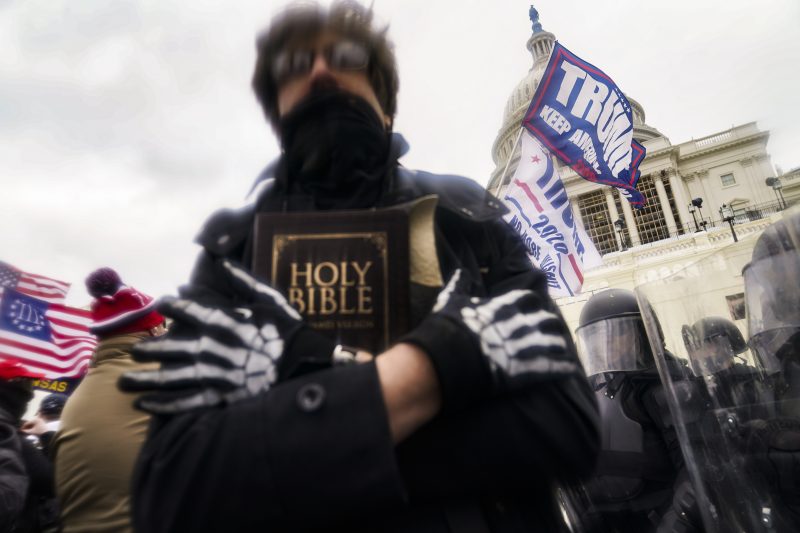Unraveling Trump's Cryptic Signals on Chaos and Conflict
 Since taking office in 2017, former President Donald Trump's rhetoric and actions have often been marked by dog whistles that resonate with certain segments of the American population. One recurring theme throughout his term was his repeated suggestions of unrest and violence, particularly during times of civil unrest or protest. Trump's language and messaging often contained subtle nods to his base, inciting fear and division while protecting himself from direct criticism. Let's explore some instances where Trump employed dog whistles regarding unrest and violence.
After the tragic events in Charlottesville in 2017, where white supremacists clashed with counter-protesters resulting in the death of Heather Heyer, Trump infamously remarked that there were very fine people on both sides. While on the surface, this statement may seem like an attempt to promote unity, it was widely interpreted as a dog whistle to white supremacists and alt-right groups, signaling his tacit support for their actions and beliefs.
During the Black Lives Matter protests that swept the nation in response to the killing of George Floyd in 2020, Trump consistently used inflammatory language to describe the protesters. He referred to them as thugs and anarchists, while also invoking law and order rhetoric. By framing the protests in this manner, Trump attempted to stoke fear among his supporters, positioning himself as a strong leader who could quell the so-called chaos.
Trump's dog whistles were also evident in his response to the unrest following the 2020 presidential election. Despite no evidence of widespread voter fraud, Trump repeatedly claimed that the election was stolen from him, riling up his base with false assertions and conspiracy theories. This rhetoric culminated in the violent storming of the U.S. Capitol by a pro-Trump mob on January 6, 2021.
Throughout his presidency, Trump's use of dog whistles regarding unrest and violence was a deliberate strategy to maintain support among his base while deflecting blame. By tapping into the fears and prejudices of certain groups within American society, he was able to sow division and create a sense of us versus them. While Trump is no longer in office, the legacy of his dog whistles lives on, serving as a stark reminder of the power of language and the dangerous consequences of using it to incite unrest and violence.
Since taking office in 2017, former President Donald Trump's rhetoric and actions have often been marked by dog whistles that resonate with certain segments of the American population. One recurring theme throughout his term was his repeated suggestions of unrest and violence, particularly during times of civil unrest or protest. Trump's language and messaging often contained subtle nods to his base, inciting fear and division while protecting himself from direct criticism. Let's explore some instances where Trump employed dog whistles regarding unrest and violence.
After the tragic events in Charlottesville in 2017, where white supremacists clashed with counter-protesters resulting in the death of Heather Heyer, Trump infamously remarked that there were very fine people on both sides. While on the surface, this statement may seem like an attempt to promote unity, it was widely interpreted as a dog whistle to white supremacists and alt-right groups, signaling his tacit support for their actions and beliefs.
During the Black Lives Matter protests that swept the nation in response to the killing of George Floyd in 2020, Trump consistently used inflammatory language to describe the protesters. He referred to them as thugs and anarchists, while also invoking law and order rhetoric. By framing the protests in this manner, Trump attempted to stoke fear among his supporters, positioning himself as a strong leader who could quell the so-called chaos.
Trump's dog whistles were also evident in his response to the unrest following the 2020 presidential election. Despite no evidence of widespread voter fraud, Trump repeatedly claimed that the election was stolen from him, riling up his base with false assertions and conspiracy theories. This rhetoric culminated in the violent storming of the U.S. Capitol by a pro-Trump mob on January 6, 2021.
Throughout his presidency, Trump's use of dog whistles regarding unrest and violence was a deliberate strategy to maintain support among his base while deflecting blame. By tapping into the fears and prejudices of certain groups within American society, he was able to sow division and create a sense of us versus them. While Trump is no longer in office, the legacy of his dog whistles lives on, serving as a stark reminder of the power of language and the dangerous consequences of using it to incite unrest and violence.
If you would like to delve into the world of investment topics , go to our partner project Wall Street Wizardry
